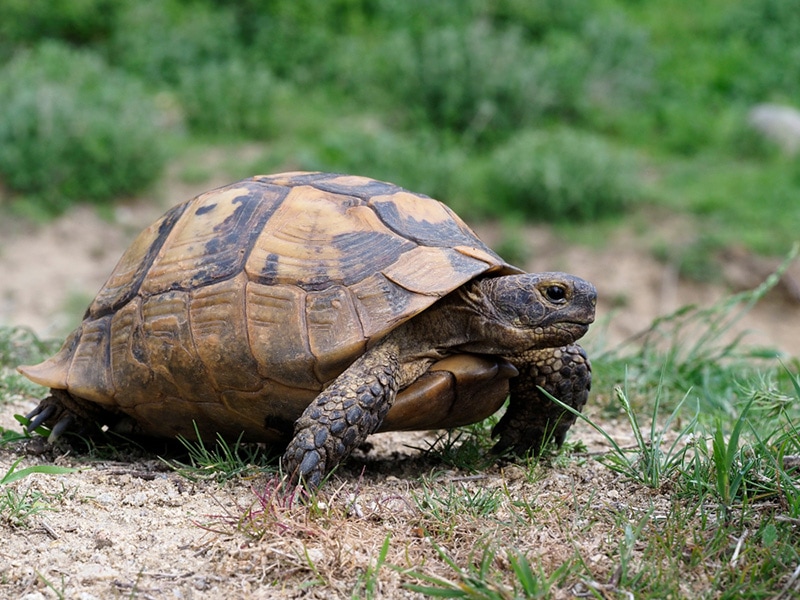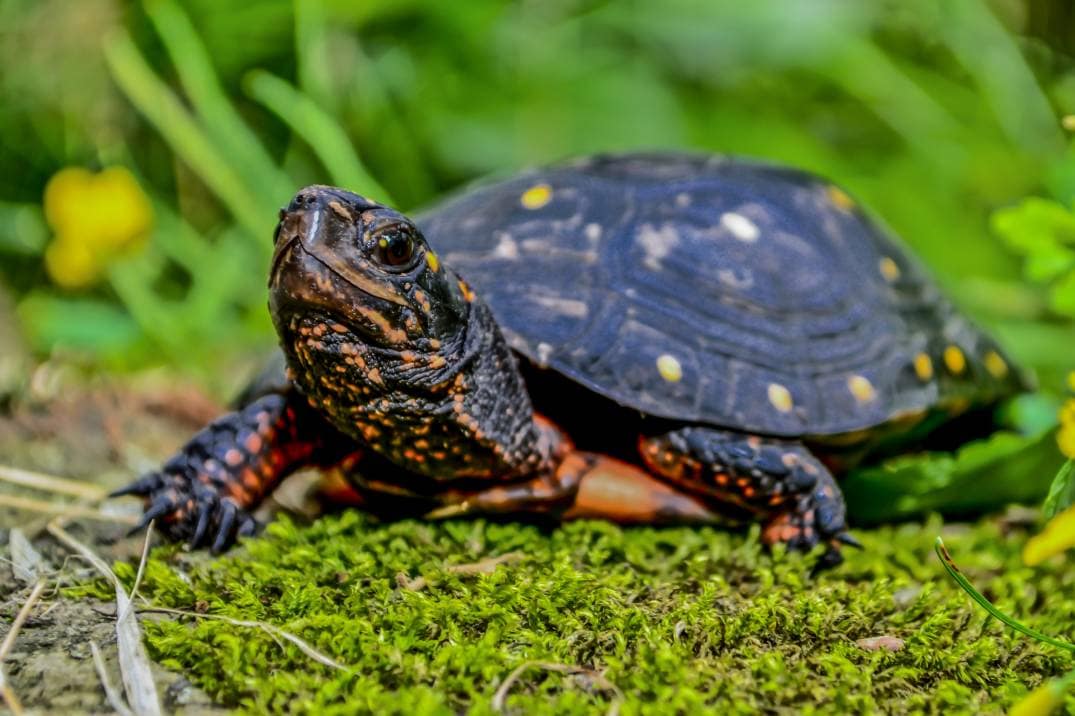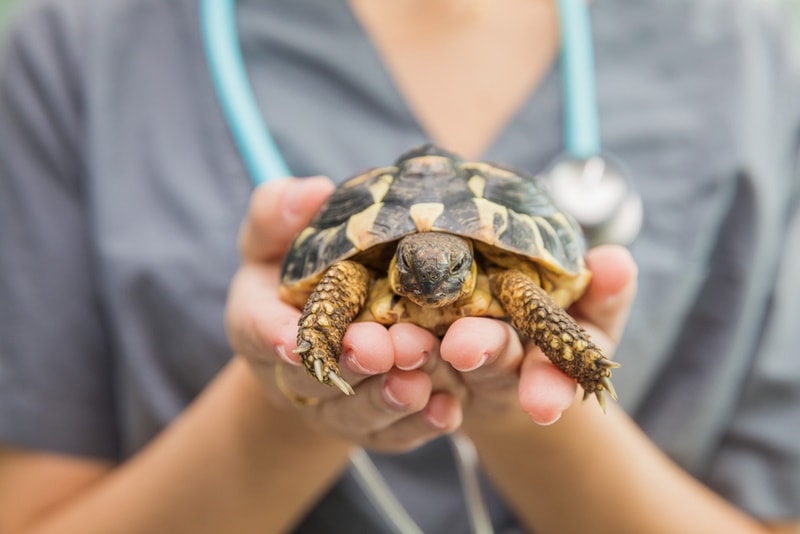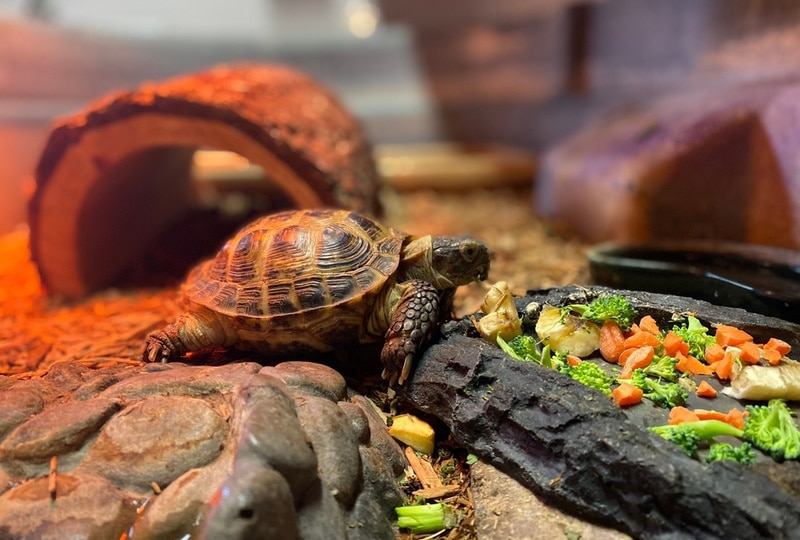How Big Do Greek Tortoises Get? Average Weight & Growth Chart

Updated on

Click to Skip Ahead
As one of the most popular species of tortoises kept as pets, Greek Tortoises have captured the hearts of reptile enthusiasts around the world. In this article, we will take a closer look at how these magnificent creatures grow from hatchlings to adults, shedding light on the milestones they achieve along the way. So, whether you’re a tortoise owner or simply fascinated by these marvelous reptiles, this post will provide you with some valuable insights into the average growth of Greek tortoises, which can be up to 32–48 ounces in weight and 5–8 inches in length.
Greek Tortoise Breed Overview
The Greek Tortoise is a small to medium-sized species of tortoise that is native to the Mediterranean region, particularly Greece and parts of Turkey. Also known as the Spur-thighed Tortoise or Testudo graeca, this breed is highly sought after by reptile enthusiasts due to its unique appearance and manageable size. The Greek Tortoise has a distinctive dome-shaped shell that is usually brown or yellow in color, with dark markings that help it blend into its natural environment. It also has a pair of large scales on its hind legs, which gives it the name “Spur-thighed.”
In terms of size, the Greek Tortoise typically reaches a length of 6 to 10 inches (8 on average), with males being slightly larger than females. They have a lifespan of 50 to 100 years, making them a long-term commitment for anyone looking to keep them as pets. While they may not be the most interactive pets, Greek Tortoises are known for their docile nature and can be easily handled with proper care and attention.
Greek Tortoises are herbivores, feeding primarily on a diet of leafy greens, vegetables, and fruits. It is important to provide them with a balanced diet that includes calcium supplements to support their shell and bone health. They also require a warm and dry enclosure with access to UVB lighting to mimic their natural habitat. Greek Tortoises are cold-blooded animals, which means they rely on external heat sources to regulate their body temperature.

Greek Tortoise Size and Growth Chart
There are many subspecies of Greek Tortoises. The largest can grow up to 10–11 inches and weigh around 80 ounces or more when fully grown, but this is rare, and most follow a similar growth to the chart below.
| Age | Weight Range | Length Range |
| Hatchling | >8 ounces | 1–1.5 inches |
| Juvenile | 8–16 ounces | 2–3 inches |
| Young Adult | 16–32 ounces | 4–5 inches |
| Adult | 32–48 ounces | 5–8 inches |
When Does a Greek Tortoise Stop Growing?
On average, these tortoises reach their full adult size within 5 to 10 years. However, some individuals may continue to grow slowly throughout their lives. But note that the growth of a Greek Tortoise is not solely determined by age, but also by the availability of resources and the overall health of the animal. A well-nourished and properly cared for tortoise will generally reach its maximum size sooner than one that is malnourished or lacks proper care.
The 4 Factors Affecting the Size of Greek Tortoise
The growth of Greek Tortoises is influenced by a combination of genetic and environmental factors. Here are some key factors that can affect their growth.
1. Genetics
Just like humans, the growth potential of Greek Tortoises is partly determined by their genetic makeup. Some individuals may have genes that predispose them to grow larger or faster than others. It’s important to obtain your tortoise from a reputable breeder or source to ensure you’re getting a healthy specimen with good genetic potential.

2. Nutrition
A well-balanced diet is crucial for the healthy growth of Greek Tortoises. In the wild, they primarily feed on a variety of plant matter, including grasses, weeds, and leafy greens. As a tortoise owner, it’s essential to provide a diverse diet that includes a mix of fresh vegetables, fruits, and occasional protein sources like insects. Proper hydration is also important, so always ensure your tortoise has access to fresh water each and every day.
3. Habitat and Enclosure
The size and quality of the enclosure can directly impact the growth of Greek Tortoises. They require ample space to roam and explore, along with a suitable substrate for burrowing. Providing a UVB light source is crucial for their overall health and growth, as it aids in the synthesis of vitamin D3, which is essential for calcium absorption and bone growth.
4. Temperature and Humidity
Greek Tortoises thrive in a warm and moderately humid environment. Maintaining the appropriate temperature gradient within their enclosure is vital for their growth and overall well-being. A basking spot with a temperature of around 90–95°F and a cooler area around 75– 82°F should be provided. Also, misting the enclosure regularly with water can help maintain the required humidity levels.

Ideal Diet for Maintaining a Healthy Weight
The main component of a Greek Tortoise’s diet should consist of hay, grass, tortoise pellets, and leafy greens and vegetables. These can include a variety of options such as dandelion flowers and greens, clover, carrots, bell peppers, celery, kale, romaine lettuce, cucumber, and spinach. These vegetables are high in fiber and provide essential nutrients for the tortoise’s digestive system. It’s recommended to offer a mix of different greens to provide a diverse range of nutrients.
It is crucial to avoid feeding Greek Tortoises fruits that are high in sugar content. While fruits can be offered occasionally as a treat, they should not make up a significant portion of their diet. High-sugar fruits can lead to obesity and other health issues in tortoises.
When it comes to protein sources for Greek Tortoises, it is best to limit animal-based proteins such as mealworms or crickets. These should only be offered sparingly as an occasional treat. The majority of their protein intake should come from plant-based sources such as legumes or cooked lentils.
Remember that each tortoise’s dietary needs may vary slightly, depending on factors such as age and overall health.
How to Measure Your Greek Tortoise
Measuring your Greek Tortoise is an important task for any tortoise owner. It allows you to track the growth and development of your pet and ensure that it’s healthy and thriving. To measure your Greek Tortoise, you’ll need a measuring tape or ruler that is suitable for small measurements. Gently pick up your tortoise and place it on a flat surface, such as a table or the floor. Make sure that the tortoise is fully extended, with all limbs stretched out. Place the measuring tape or ruler alongside the tortoise’s shell, starting from the top of its head and extending all the way to the tip of its tail. Take note of the measurement in either centimeters or inches, depending on your preference. Repeat this process periodically to monitor your tortoise’s growth over time.
In addition to measuring the length of your Greek tortoise, it’s also essential to measure its weight. This can be done using a small scale that is suitable for weighing small animals. Gently pick up your tortoise and place it on the scale, making sure that all four limbs are supported and not dangling off the edge. Take note of the weight measurement in either grams or ounces, depending on the scale used. Regularly monitoring your tortoise’s weight can help you ensure that it is maintaining a healthy size and not experiencing any significant weight loss, which could be a sign of illness or malnutrition.

Conclusion
It’s important to note that these growth milestones are approximate and can vary based on individual characteristics and environmental factors. Monitoring your tortoise’s growth and consulting with a reptile vet can provide more accurate insights into their development.
Featured Image Credit: Erni,Shutterstock











